'My dearest Lady Blanche...' The courtship and marriage of James Maitland Balfour and Lady Blanche Cecil
'My dearest Lady Blanche...' The courtship and marriage of James Maitland Balfour and Lady Blanche Cecil
Letters held within the papers of the Balfour family (GD433), recently purchased by the National Records of Scotland (NRS) for the nation, allow us to witness the blossoming romance between James Maitland Balfour and Lady Blanche Cecil in the summer of 1843, leading to their marriage in the same year on 15 August.
James Maitland Balfour was born on 5 January 1820 to James Balfour and Lady Eleanor Maitland. Balfour senior made his fortune when he left for India as a young man, working as a contractor for the East India Company. He returned rich, his business having dealt in military materials, provisions for the Navy, and the building of railways. He married Lady Eleanor Maitland, daughter of James Maitland, 8 Earl of Lauderdale, and purchased the Whittingehame estate in East Lothian. It was there that their eldest son, James, was born.
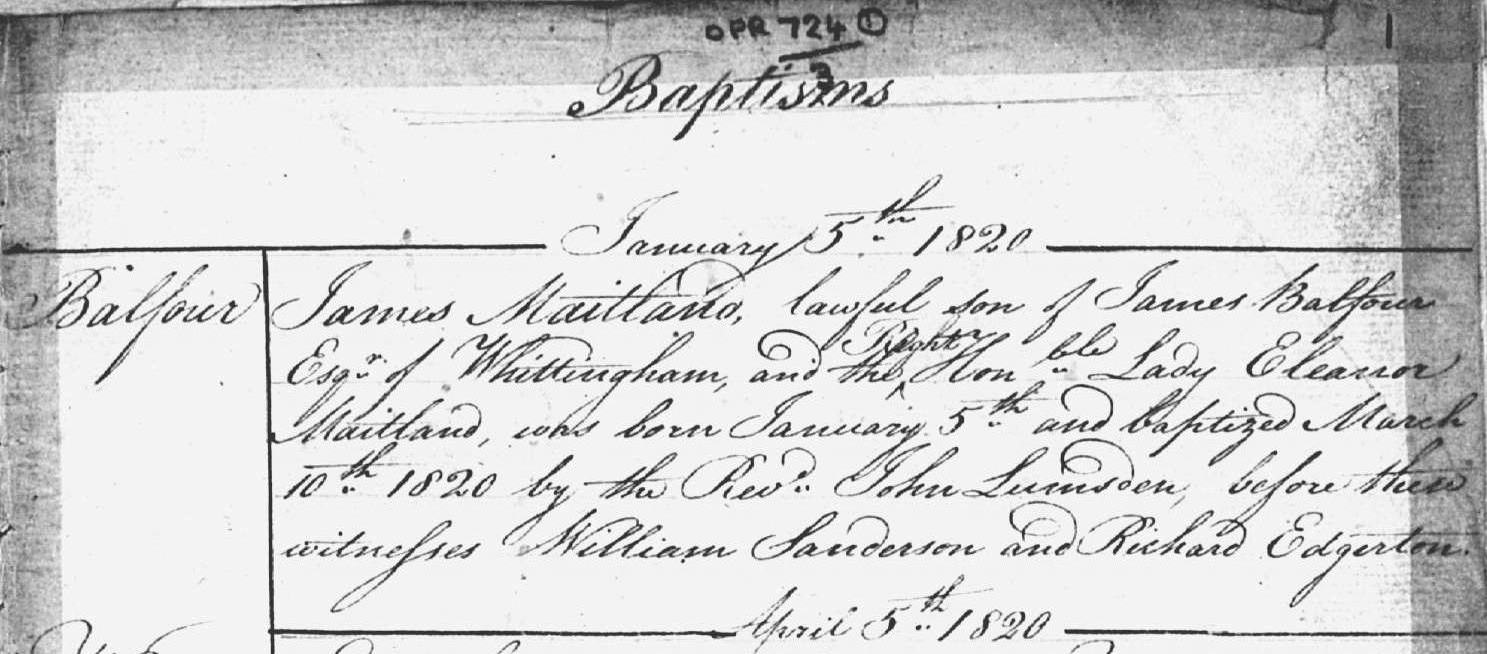
The baptism entry of James Maitland Balfour in the Parish of Whittingehame (Crown copyright, NRS, 724 page 2)
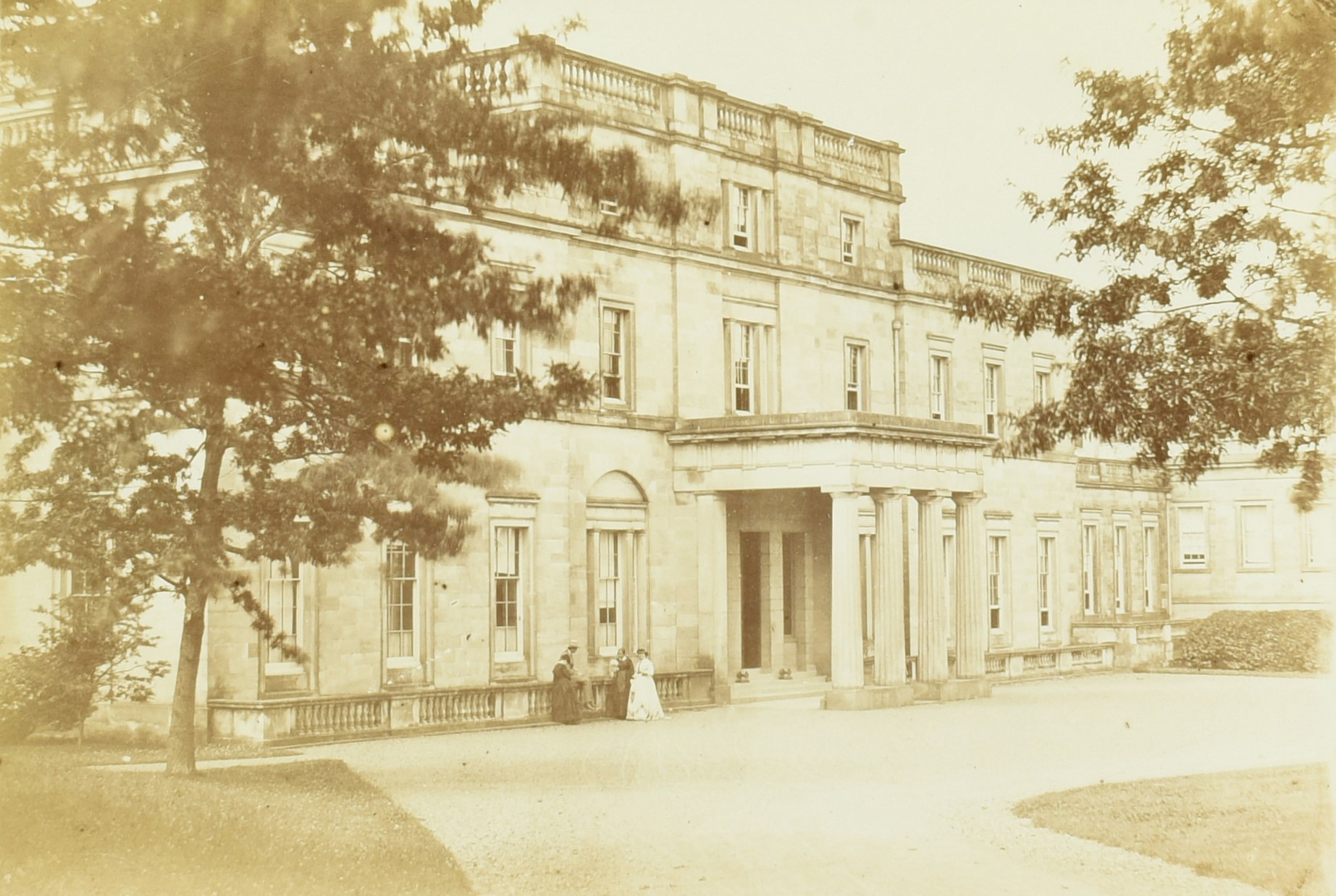
A photograph of Whittingehame House, n.d. (NRS, The Balfour of Whittingehame Papers, GD433/2/483/1)
Balfour was a rather gawky schoolboy but matured into a ‘handsome, dashing and athletic young man’. Educated at Eton and Cambridge, he was then sent to London to learn about business and investment. It was there, moving in the same social circles, that he fell in love with Lady Blanche Mary Harriet Gascoyne Cecil.
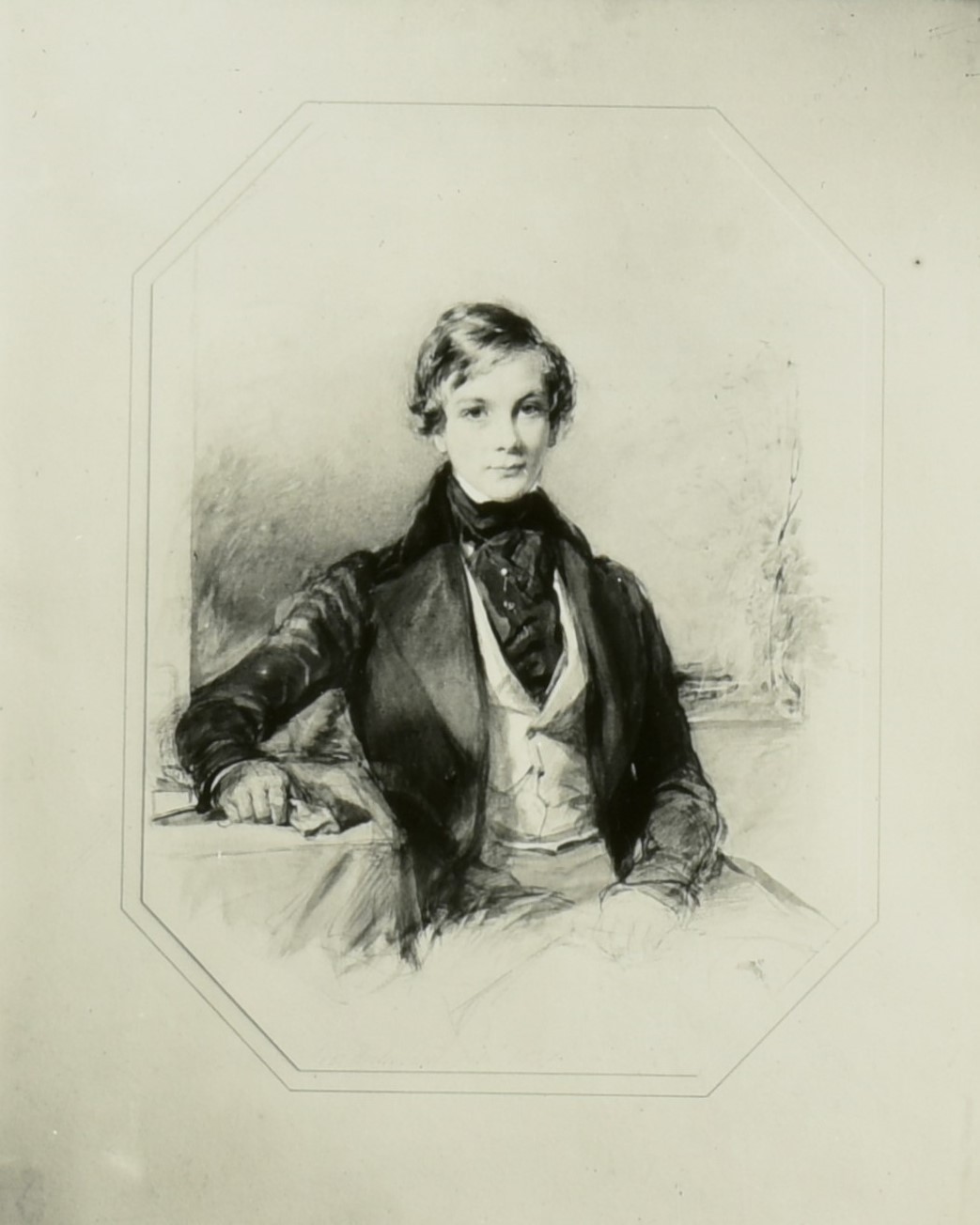
Portrait of James Balfour by George Richmond, 1837 (NRS, The Balfour of Whittingehame Papers, GD433/2/473/11)
Lady Blanche Cecil was the daughter of James Brownlow, 2nd Marquess of Salisbury and Frances Mary Gascoyne. Born in London on 5 March 1825, she was also the sister of the future three-term Prime Minister, Robert Gascoyne-Cecil, 3rd Marquess of Salisbury (1885-1886, 1886-1892 and 1895-1902). Lady Blanche was descended from Robert Cecil, 1st Earl of Salisbury. The Cecils held immense political power during the reigns of Queen Elizabeth I of England and King James VI of Scotland and I of England. By the 1840s, their name was still highly respected in society as an established aristocratic family of influence and wealth.
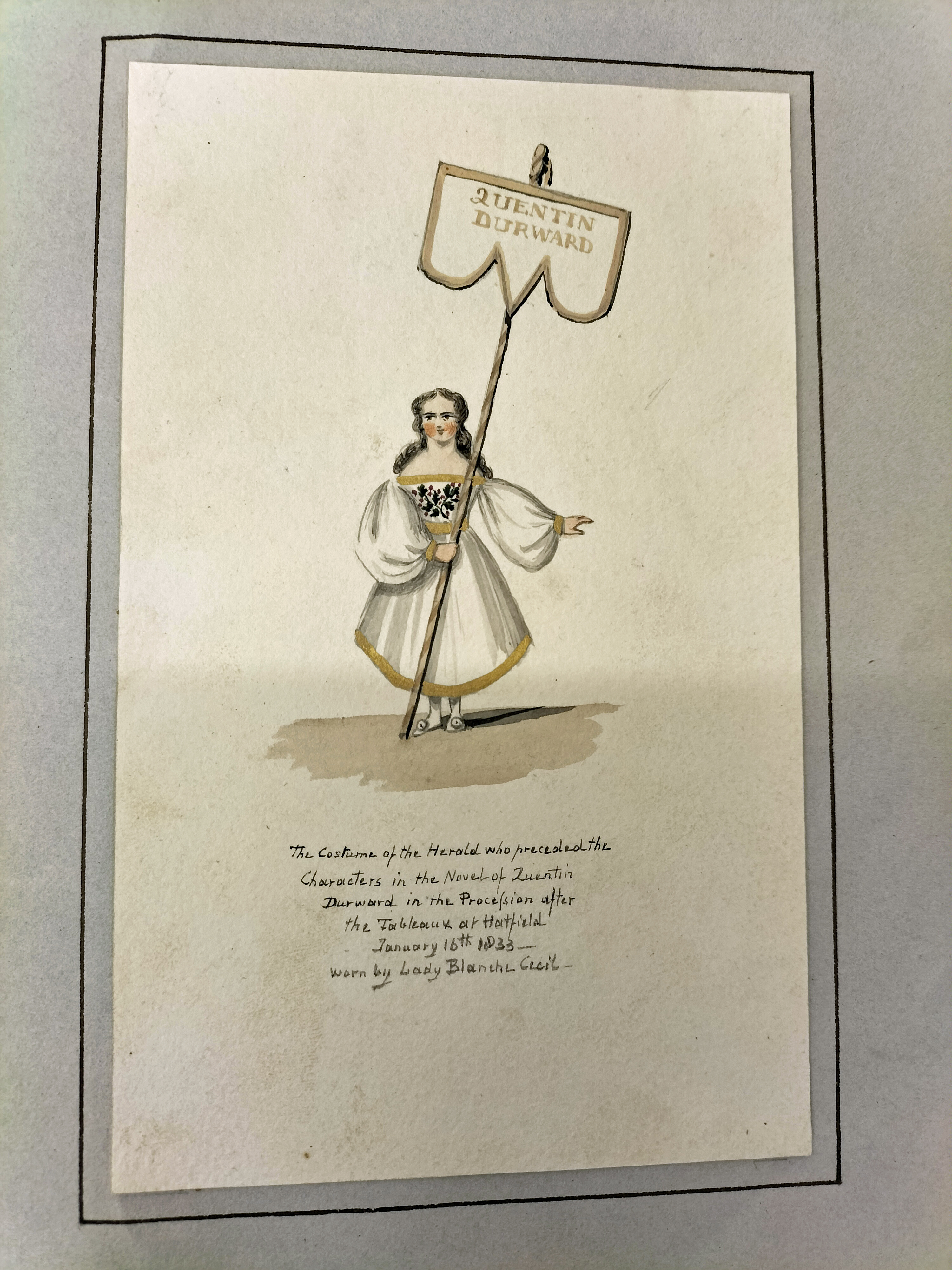
An illustration of Lady Blanche leading a series of tableaux vivants (a static and silent scene of characters in costume representing a story) enacted at Hatfield House in January 1833 for Lady Salisbury (Reproduction with the permission of the Marquess of Salisbury, Hatfield House)
On Saturday 15 July 1843, having fallen in love with Lady Blanche, Balfour wrote to express his feelings and to propose marriage:
"My dearest Lady Blanche
I cannot leave town with no chance of seeing you again for many months without doing that which must either make me the happiest or most wretched of men. O Lady Blanche, I love you deeply fervently and O how happy should I be if I could only hope that that love was returned. You must have seen what are my feelings towards you…If however this is not the case and you cannot hold out any hopes to me I must resign myself to my fate but my most fervent prayer will be for your happiness and the hours I have spent with you will be looked back upon as the brightest of my life… yours most truly and devotedly JM Balfour."
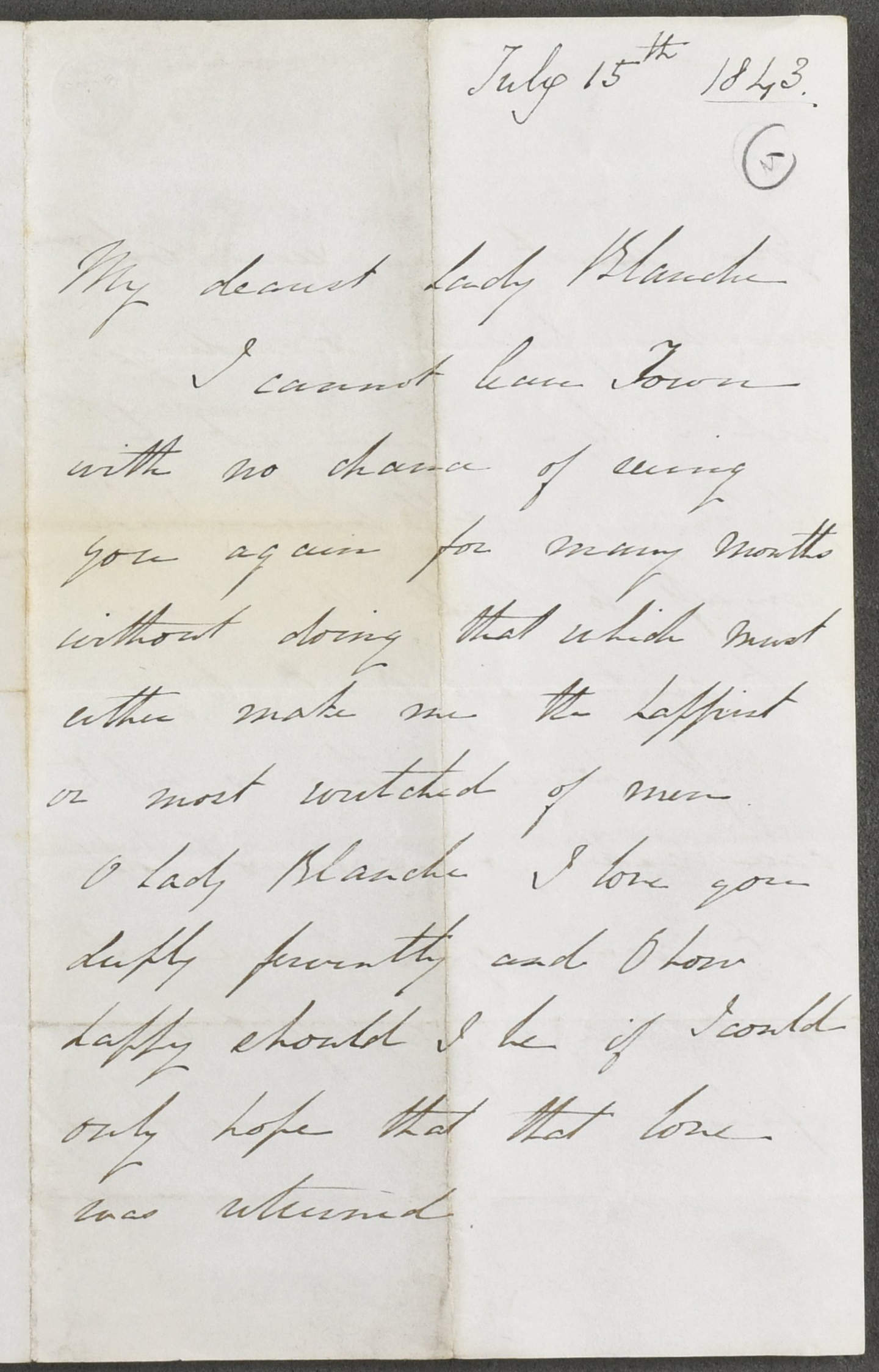
Detail from the letter written to Lady Blanche on 15 July 1843 (NRS, The Balfour of Whittingehame Papers, GD433/2/203/1/1)
Lady Blanche accepted and, upon their engagement, Balfour wrote to her from one of his family homes, 3 Grosvenor Square, London, excited that his family were agreeable to their planned marriage:
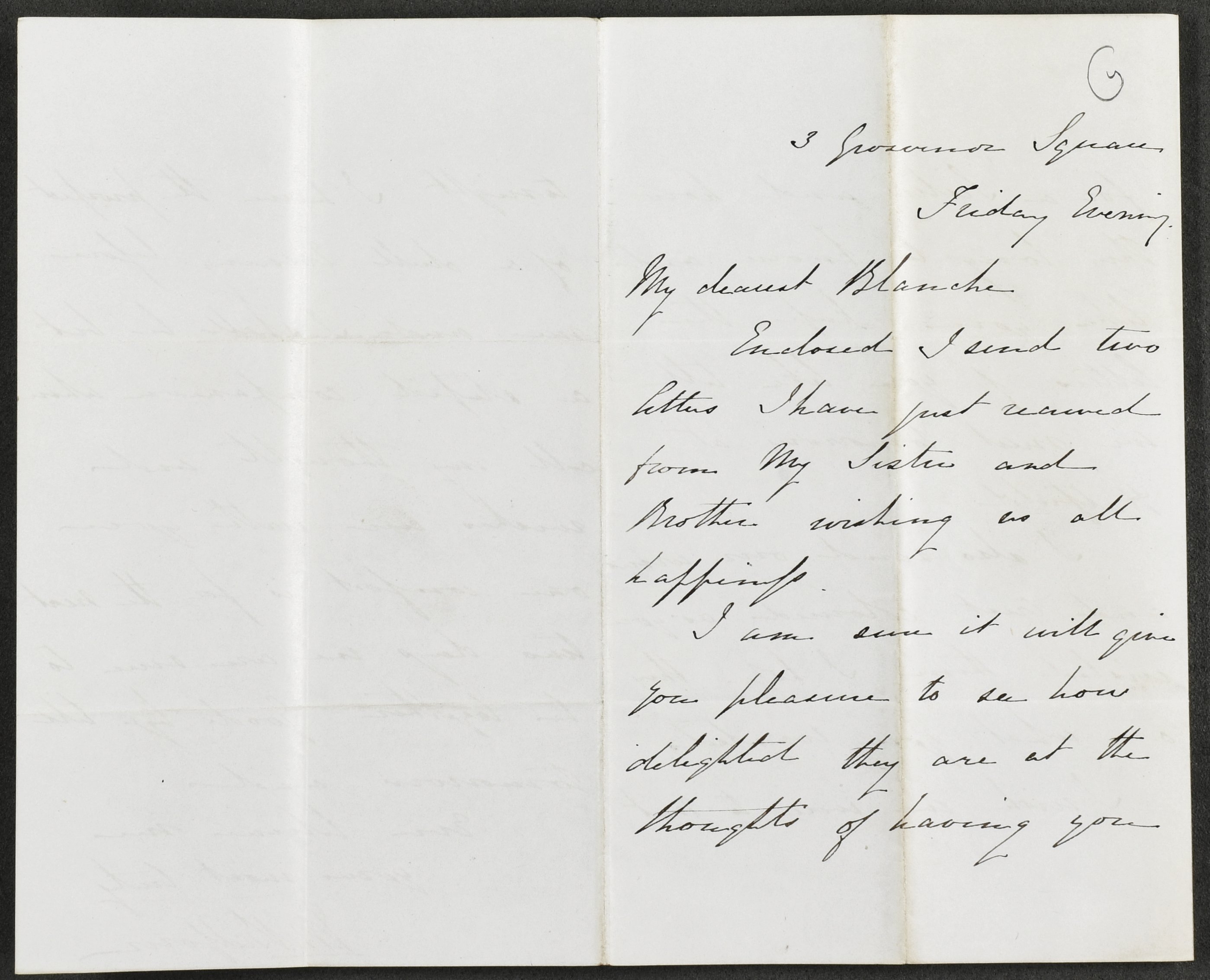
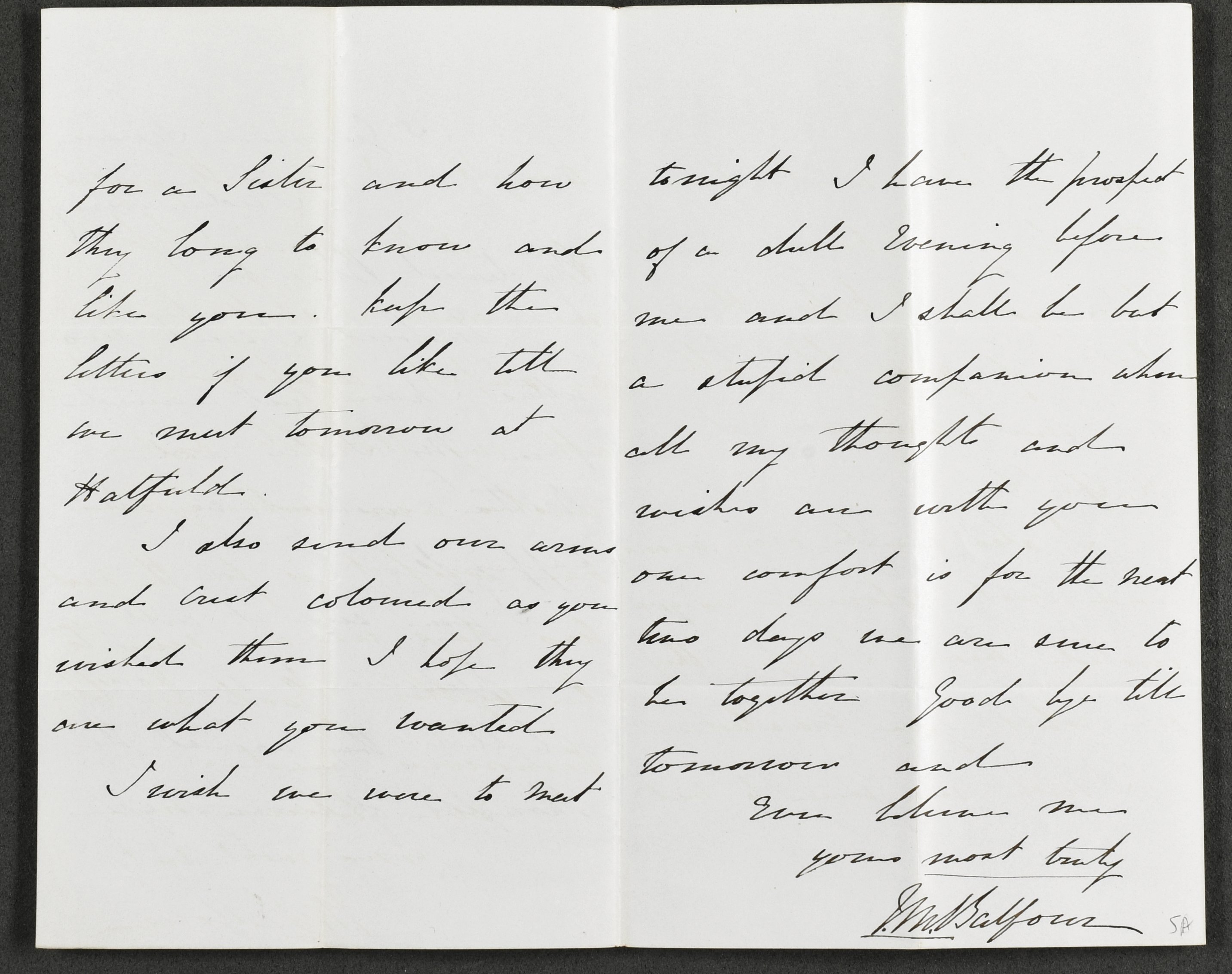
A letter from James Balfour to Lady Blanche following their engagement. Written from one of his family homes, 3 Grosvenor Square, London (NRS, The Balfour of Whittingehame Papers, GD433/2/203/1/5)
Transcription of the letter from James Balfour to Lady Blanche (NRS, GD433/2/203/1/5)
One of these letters, from Balfour’s brother-in-law Henry Arthur Herbert, was sent from his estate ‘Muckross’ in County Kerry, Ireland on 18 July to say: ‘I am so truly rejoiced at your happiness…If ever a man had a bright prospect for His future before him you are the happy mortal… if what speaks true your lady love is all perfect, in fact just what your best friend would wish for you.’
Lady Eleanor wrote from Darlington, England, to congratulate her son on his engagement, writing that: ‘Y[ou]r Father seems to admire her so much – thinks her so pretty & sweet a lovely expression & added last night when talking of you “I think Jim most fortunate in having obtained her”. She is everything I could wish - & after all my fears & dread of a Daughter in Law I am quite delighted to think my fate is fixed so delightfully & I really hope I have got one who will love me as much as I feel I shall do her.’
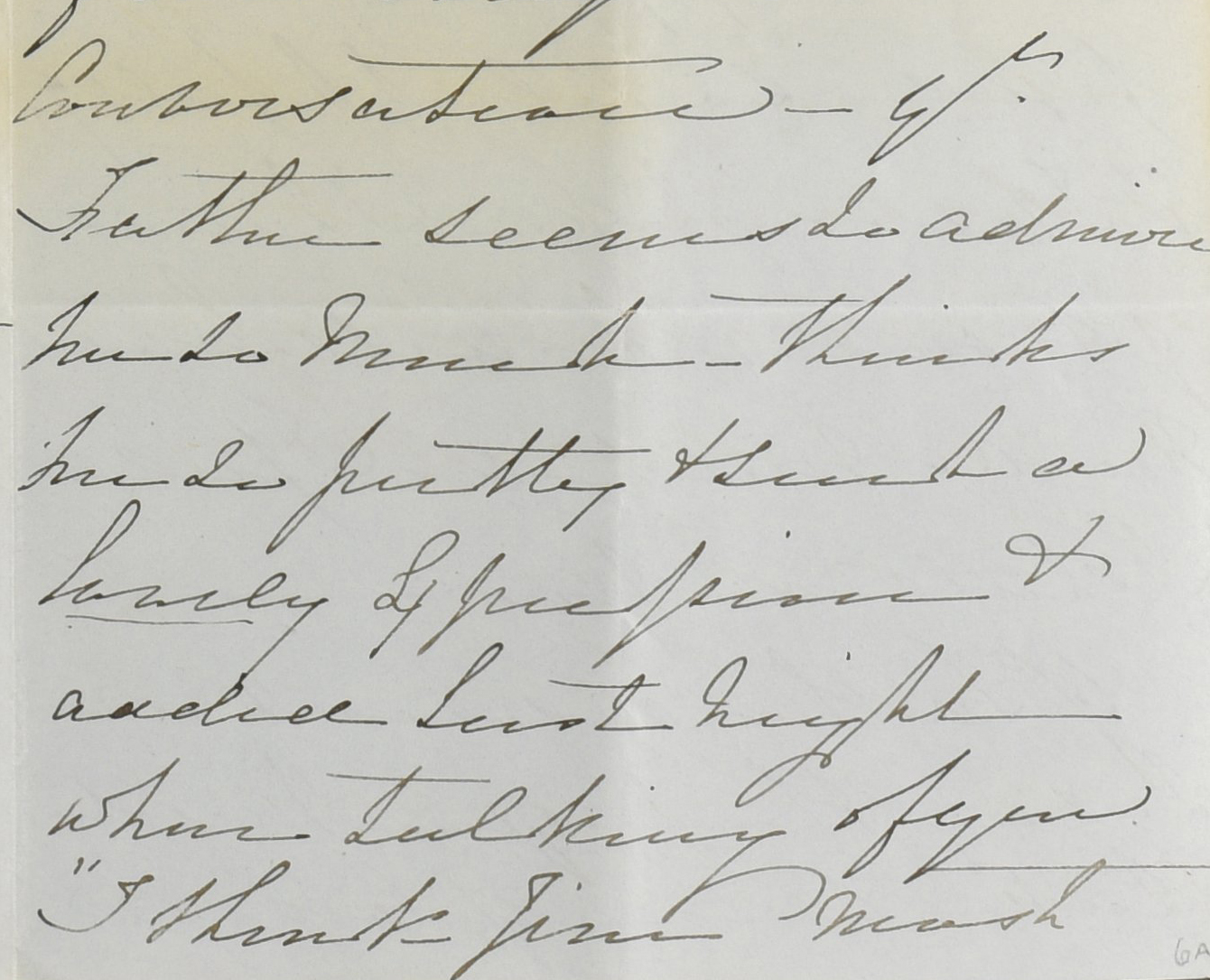
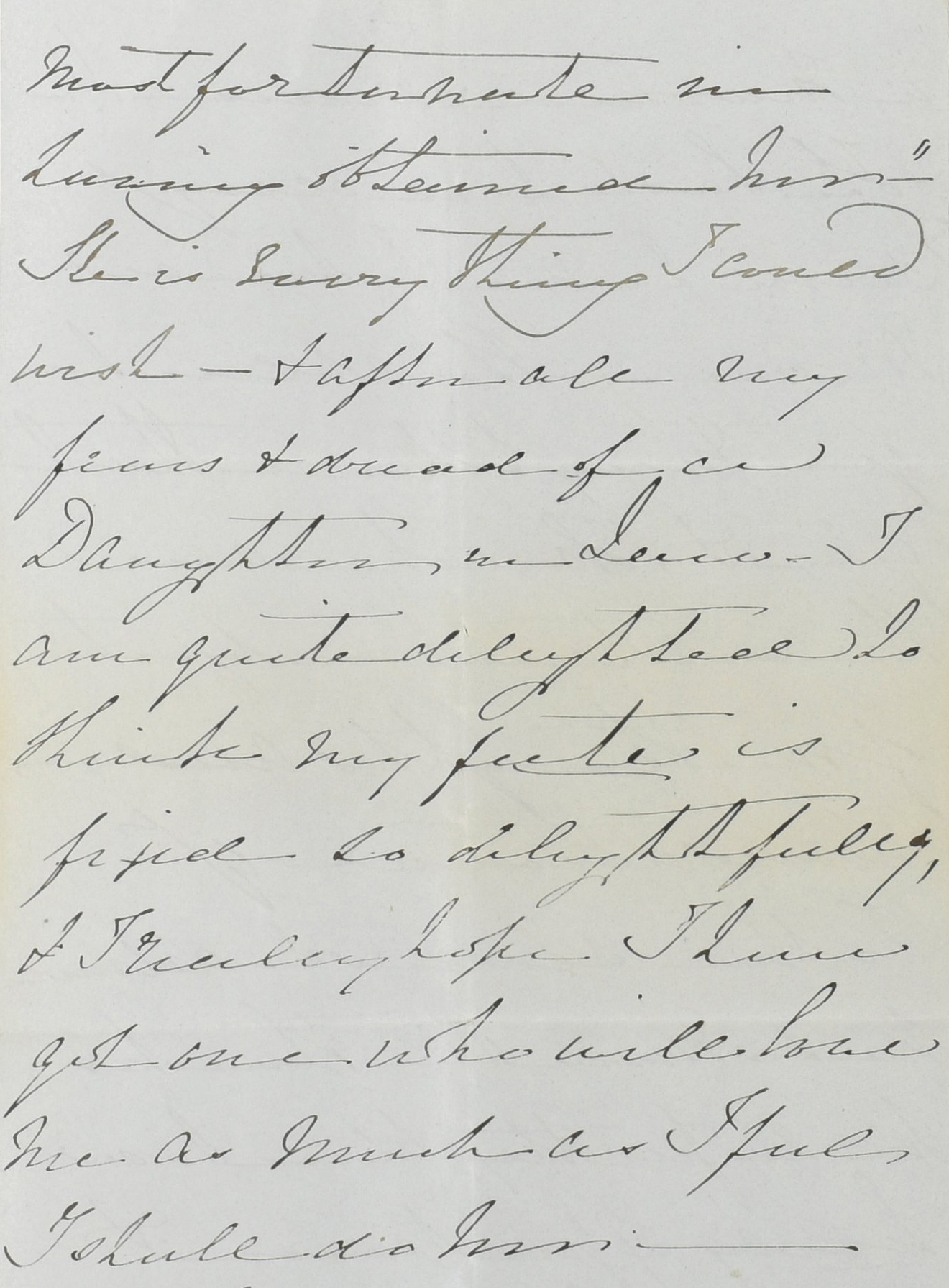
Detail from letter from Lady Eleanor to her son upon his engagement (NRS, The Balfour of Whittingehame Papers, GD433/2/204/6)
Balfour, delighted by this, forwarded the letter straight to Lady Blanche:
‘…you will see by [the letter] what a good impression you have made on all of them especially my Father. I cannot tell you what pleasure it gives me to see that they all like you as much I certainly never have done anything to deserve being so very happy as I now am.'
Indeed, Balfour’s family would have been thrilled with this match. The Balfours, an ancient Scottish family, were now to be officially affiliated with the Cecils - an intelligent, well-connected English aristocratic family who also held influence in political circles. Lord Salisbury, Lady Blanche’s father, held office in two Tory governments; Balfour was a politician and served as a Conservative member for the Burghs of Haddington, Dunbar, North Berwick, Lauder and Jedburgh from 1841 to 1847.
Just as Balfour’s family had sent their good wishes, Lady Blanche received others from her own family.
Her brother, Lord Robert Cecil playfully joked with his sister: ‘you the cool, unprejudiced, and romantic Blanche have condescended to marry your first season; without having teazed a hundred loves with fruitless hopes without having caused any duels or created any animosity between your admirers, you have yielded your hand to a lover, romantic though he be, without eloping with him by night out of window by a rope ladder. Such a thing was never heard of in the Arabian Nights, nor in the Tales of the Alhambra, nor anywhere else.’
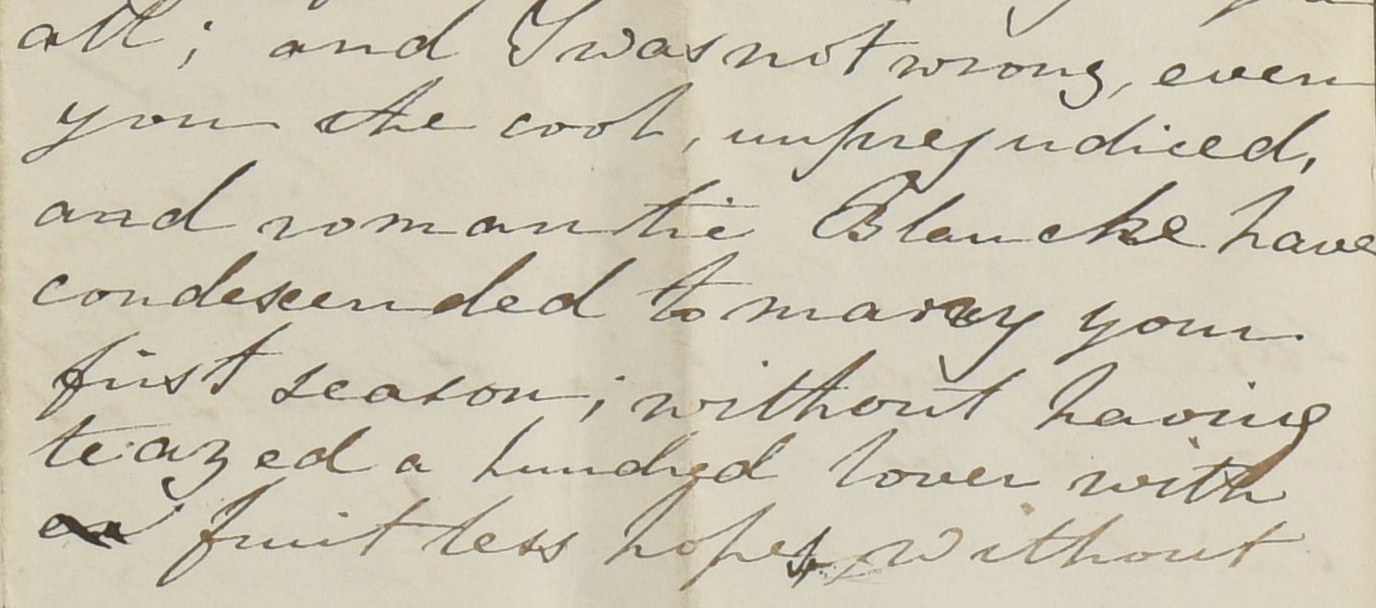
Detail from the letter written to Lady Blanche by her brother, Lord Robert Cecil (NRS, The Balfour of Whittingehame Papers, GD433/2/204/5)
Poetic verses were received from Lady Blanche’s younger brother Lord Eustace, who was only nine at the time. His third verse read:
‘I am not sure I’ve guessed it quite,
But yet I think I must be right,
The news this morning’s letter carried,
Was meant to tell you’re to be married,
So now dear Blanche pray take y[ou]r pen,
To say to whom? & where? & when?’
Plans for the marriage of the young couple (Balfour aged 23 and Lady Blanche 18) were arranged quickly, it being said that Lord Salisbury was anxious to re-marry and wished for his daughters to be wed before he did so. Indeed, Lady Eleanor Balfour wrote to her son from Whittingehame to express her shock at the speed: ‘I am in amazement my dearest Jim to learn that the marriage is fixed for Tuesday the 15th. I never was more surprised – as I never expected it would take place before the End of August at soonest…’
Balfour took pride in organising the wedding: ‘I enjoy having anything to do which will either give you pleasure or which you wish to have done.’ Amongst his requests were: to obtain ‘a list of persons to whom [Lord Salisbury] wishes cake to be sent as I cannot put off ordering any longer you could write out the list in no time if he is too much engaged’; to ask whether she had ‘decided anything as a dress for your Bridesmaids or are they not be alike’; and to forward the ‘arms for our carriage…let me know about Imperials as I must decide at once. I saw the carriage today not finished of course but put together and I think it looks very well.’
By the end of the month, two short weeks after the engagement occurred, on 28 July 1843 the Lincolnshire Chronicle wrote ‘We have reason to believe the preliminaries are completed for the marriage of Lady Blanche Cecil, daughter of the Marquis of Salisbury, and Mr James Maitland Balfour, M.P., for the Haddington Burghs. It is said the nuptials are to be celebrated in the course of the ensuing month.’
The wedding approaches
Balfour’s character was said to be ‘liable to sudden dissipation by bad temper’ however, in these early, passionate, days of their relationship, he was keen to express his love and affection to Lady Blanche in his letters. When a sudden bout of ill-health affected Lady Blanche and prevented them from meeting, Balfour mourned that: ‘I cannot tell you how lonely and dull I feel when I shall not see you all day it will be the first which has passed without our meeting and it makes me feel low and unhappy… I shall call on him [Lord Salisbury] this afternoon to hear how you are and in hopes if you are better of having a sight of you if only for a moment do take care of yourself and get well as soon as you can. You were so well when I left you yesterday that this has come quite unexpectedly upon me’.
On Monday 7 August 1843, one week before the wedding, Balfour wrote to Lady Blanche with excitement: ‘My dearest Blanche…on Saturday I shall go down again [to Hatfield, the family mansion of the house of Cecil] not to leave … till I carry you off with me this is much more than I expected would be allowed me I hope you do not regret it. We have no chance of meeting till tomorrow night I am afraid and then only in public I must not complain as I shall soon have you entirely to myself’.
A clipping from the newspaper ‘The Albion’ dated August 21 1843, found within the Balfour papers, gives details of the wedding ceremony, held at Hatfield-house:
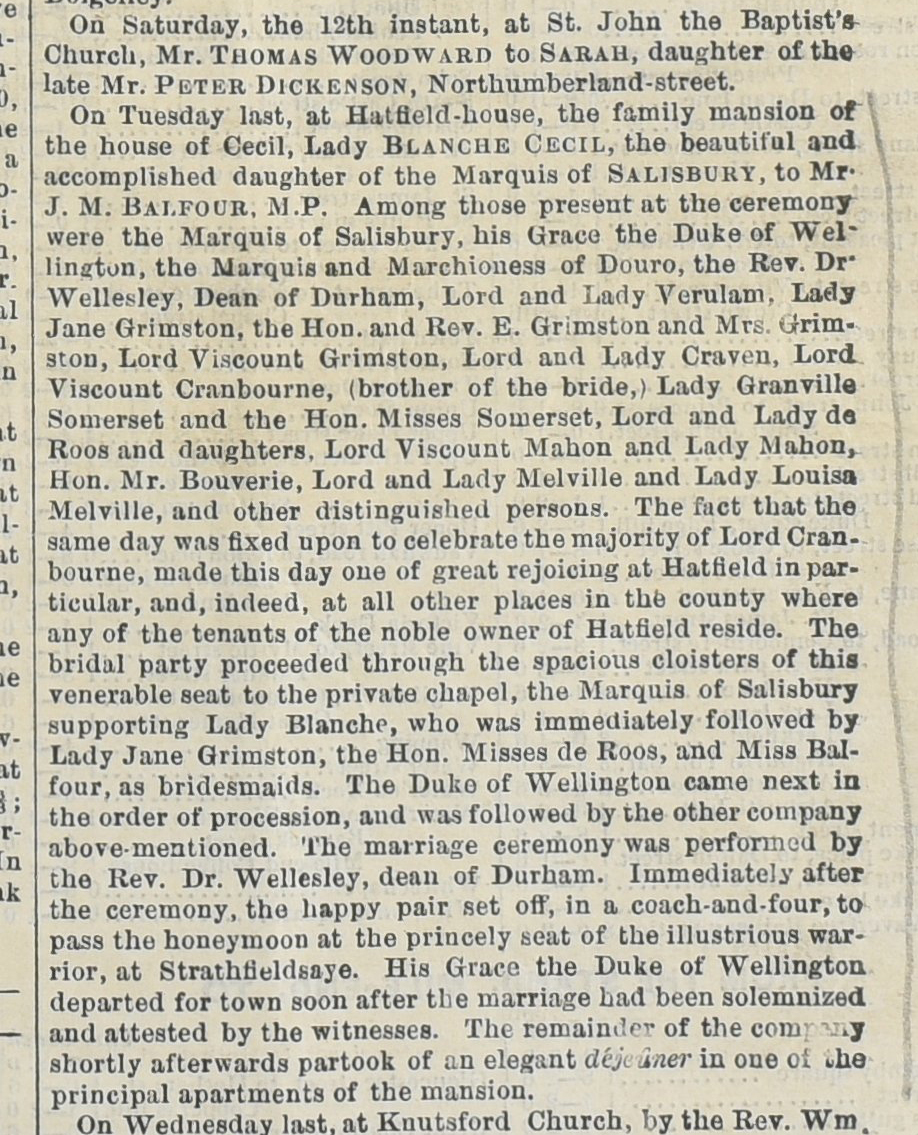
NRS, The Balfour of Whittingehame Papers, GD433/2/204/14
Together, Balfour and Lady Blanche had eight children: three daughters (Eleanor, Evelyn and Alice) and five sons (Arthur, Cecil, Francis, Gerald and Eustace). Arthur became Prime Minister of the United Kingdom from 1902-1905 and was Foreign Secretary from 1916-1919.
Balfour did not live a long life. In 1854 he developed the first signs of tuberculosis of the lungs. Lady Blanche nursed him devotedly for two years, moving the family to Madeira in the hope that a kinder climate would help his condition. Balfour did not recover and he died on 23 February 1856.
Lady Blanche wrote to Balfour’s mother, Lady Eleanor, to tell her of her son’s death. She recounted that ‘a few hours before the end he pressed his lips to mine. The last token of consciousness we obtained was when I said to him “It has pleased God to call you to Himself – are you prepared to go to him – prepared by trusting in Christ’ and he distinctly whispered ‘yes’. We had already learnt that he sent you his love & a kiss.’
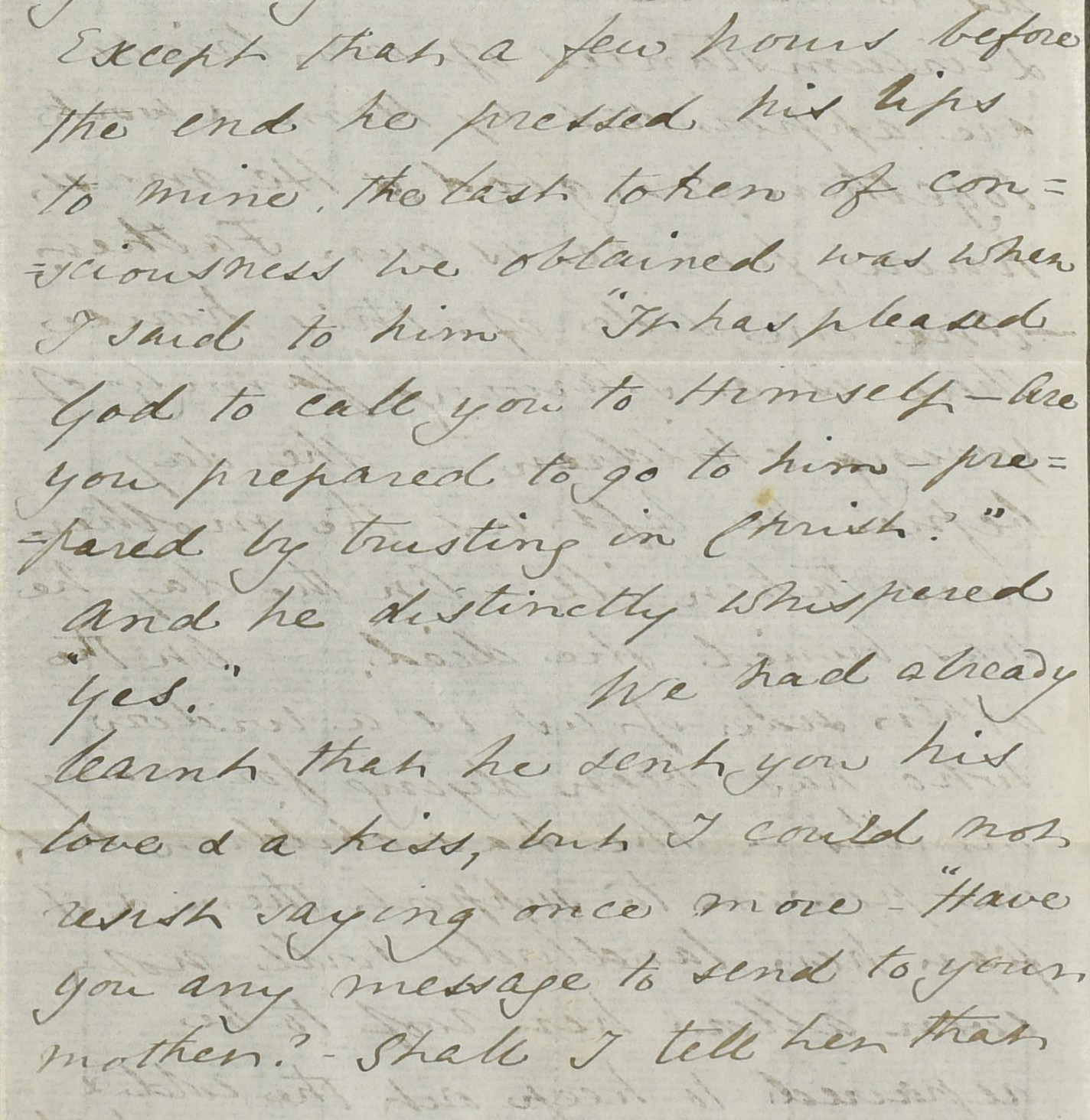
Detail from of a letter from Lady Blanche to Lady Balfour, informing her of her son's death (NRS, The Balfour of Whittingehame Papers, GD433/2/203/2/28)
Balfour was buried on the island before the family returned to Whittingehame.
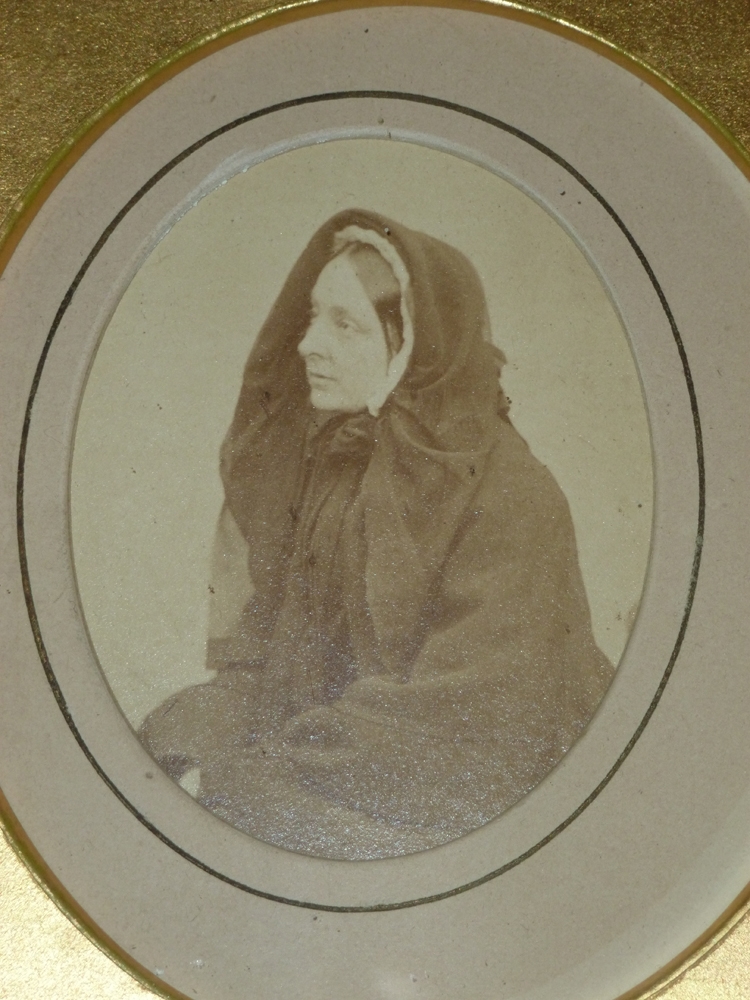
Lady Blanche in mourning, aged 32 years old. Reproduced with permission of the Marquess of Salisbury, Hatfield House
Lady Blanche dedicated the rest of her life to raising their children and engaged both her sons and daughters in lively conversation, intelligent debate and education. As her children came of age, however, her health deteriorated and for the last two years of her life she suffered from heart disease, which forced her to rest at home, much against her nature. She died in her London home on 16 May 1872, aged 47, having left instructions for a simple funeral and was laid to rest at Whittingehame.
Resources used and Further Reading
- 'A life of Arthur James Ballfour', Max Ergremont (Collins, 1980)
- Landed families of Britain and Ireland, (351) Balfour of Whittingehame, Earls of Balfour and Balfour of Balgonie and Newton Don
- 'Arthur James Balfour', Kenneth YOung (G. Bell and Sons, 1963)
- 'Balfour the Last Grandee, A.J. Q. Adams (John Murray Publishers, 2007)